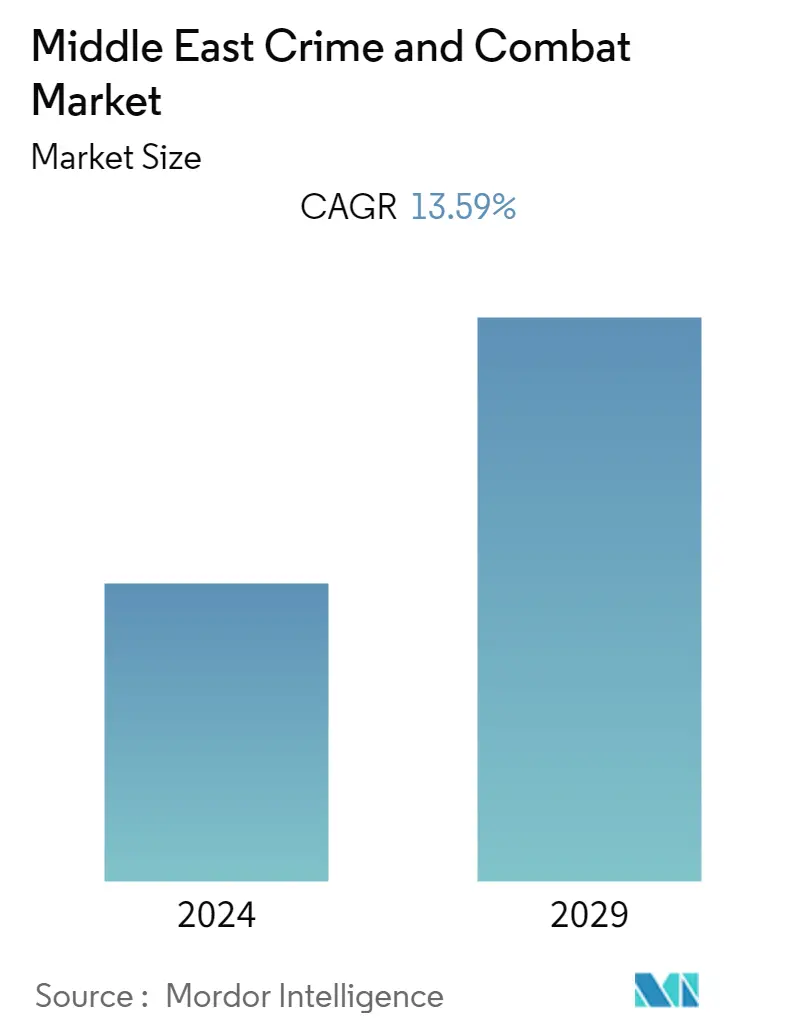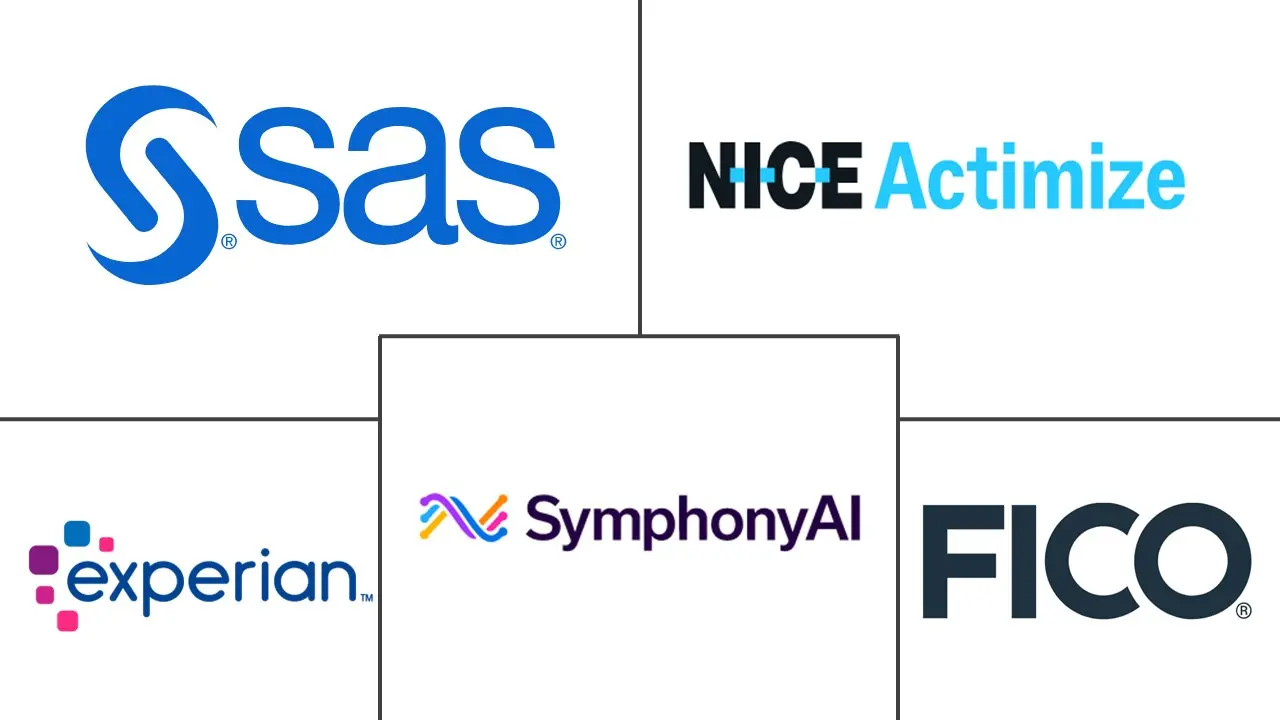Market Size of Middle East Crime and Combat Industry

| Study Period | 2019 - 2029 |
| Base Year For Estimation | 2023 |
| Forecast Data Period | 2024 - 2029 |
| Historical Data Period | 2019 - 2022 |
| CAGR | 13.59 % |
| Market Concentration | Medium |
Major Players
*Disclaimer: Major Players sorted in no particular order |
Need a report that reflects how COVID-19 has impacted this market and its growth?
Middle East Crime And Combat Market Analysis
The Middle East crime and combat market was valued at USD 0.16 billion in the previous year, and it is expected to reach USD 0.34 billion over the forecast period, registering a CAGR of 13.59%. The need for safety and compliance management is increasing exponentially daily, as governments and companies in the region aim to minimize any possible channel of affliction with their consumers, most of which arise from non-compliance with socially and legally accepted norms.
- The regulatory bodies are focused heavily on minimizing the money-laundering concerns connected with emerging payment methods such as mobile wallets, e-payments, and e-money issuers. They have emphasized combating cybercrime and reducing any money laundering threats related to virtual currency.
- Regulatory expectations and oversight are evolving rapidly with the changes to traditional payment, specifically in real-time payments, high-value payments, cryptocurrency, and new product development. For several years, regulators have focused on modernizing AML compliance programs at banks, encouraging innovation, and improving the coordination and transfer of information between financial institutions.
- In January 2023, the UAE central bank issued new guidelines for licensed financial institutions (LFIs) on anti-money laundering and combatting the financing of terrorism (AML/CFT). According to CBUAE, initiatives will aid LFIs in evaluating risks and carrying out their legal AML/CFT requirements effectively while considering the Financial Action Task Force (FATF) standards.
- Anti-money laundering laws encourage financial institutions to be more transparent, implement advanced technology, and build comprehensive customer profiles. Banks aiming to be more proactive may need to ensure their policies are up-to-date and in line with the new regulations and that their infrastructure can integrate more data sources. Their KYC processes are automated, all while offering a great customer experience.
- With stringent regulations focused on financial services and the sophisticated risks of financial crimes around the globe, money laundering has been a critical concern for financial service organizations. Procuring skilled resources with the in-depth knowledge and skill-set of AML aligned with the changing regulatory landscape of AML compliance is posing a challenge for the development of AML solutions.
- Post-COVID-19, money laundering cases are still growing, and, as a result, companies are getting involved in strategic developments to prevent them. For instance, in December 2022, ThetaRay, a provider of AI-powered transaction monitoring technology, and NOW Money, the GCC's mobile banking solution focused on financial inclusion, announced a collaboration to implement ThetaRay's cloud-based AML solution to monitor cross-border payments and support in the prevention of financial crimes and money laundering on the fintech's payments platform.
